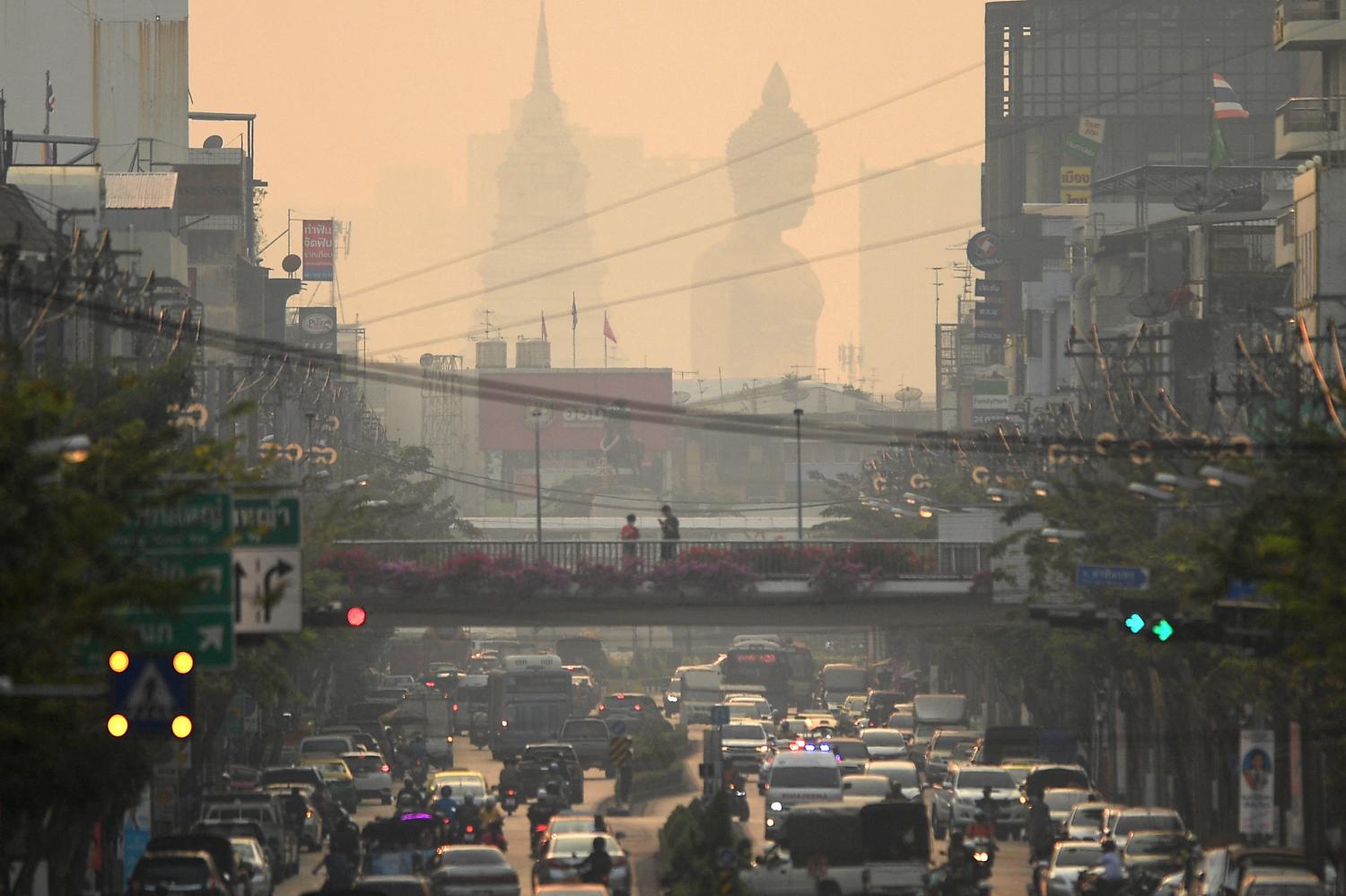
In some parts of the world, air pollution is called an "invisible killer" because it cannot be seen in the atmosphere but greatly impacts human health. Unfortunately, levels of air pollution in Thailand are often so far in excess of World Health Organization (WHO) guidelines to protect health that the invisible killer is recognisable across urban and rural landscapes. At least 40,000 premature deaths occur in Thailand every year due to air pollution exposure and the respiratory, cardiovascular, lung cancer, and other diseases it causes, making it arguably the single greatest environmental threat to the health and well-being of Thailand's population.
Fortunately, there is a growing recognition of the size of this threat and the opportunities for solutions to help reduce it. A new report recently launched at the annual Climate and Clean Air Conference being held at the United Nations Conference Centre in Bangkok by the Thai Pollution Control Department (PCD) and Climate and Clean Air Coalition outlines a strategy that could halve air pollutant emissions across Thailand over the next seven years.
The strategy relies on identifying the potentially most effective actions in different regions of Thailand to reduce air pollution, identifying barriers to implementation of these actions and how they can be overcome, and aligning and integrating Thailand's air quality programs with climate change mitigation to maximise progress on both challenges.
Actions to reduce air pollution
The report estimates the contribution of different activities to air pollution across the six regions of Thailand. Open burning of agricultural residues and municipal waste are two major sources, alongside the burning of fossil fuels and biomass in industry, households and transport. The impact of 19 actions implemented across these sectors was evaluated to understand how much they could reduce air pollution. If these actions are implemented effectively, emissions of particulate matter (the most health-damaging air pollutant) could almost drop 50% over the next 7 years, substantially improving air quality across Thailand.
The most effective actions to achieve these reductions include eliminating open burning of agricultural residues, and open burning of municipal solid waste, household switching to more efficient or cleaner cooking fuels, adoption and enforcement of Euro V and Euro VI vehicle emission standards and enforcement of industrial emission controls.
The report also highlights that different regions emit different levels of pollution from different activities, with transport a larger contribution in Greater Bangkok relative to other regions, industry a greater source in Central Thailand, and crop burning and household cooking dominating in North and Northeast Thailand. Therefore, different actions are more effective in some regions than others. The development of Regional Clean Air Plans is recommended that take into account regional differences in the major sources of air pollution and the effectiveness of different actions.
Overcoming barriers
Identifying these actions provides a strategy to reduce air pollution and improve human health, but making these reductions a reality requires that often overlooked barriers to their implementation are overcome. Through consultations with experts, the most significant technical, economic, institutional and social barriers to implementing each of the clean air actions were identified, and how significantly these barriers could slow down implementation of the actions if they were not overcome.
If no countermeasures are taken to overcome key barriers for each of the 19 measures, about only half of the possible air pollutant emission reductions are achieved. This means more polluting vehicles in Thailand's cities for longer, waste and crop residues continuing to present local and regional health hazards, and greater incidence of respiratory and cardiovascular disease than is necessary for longer. The report highlights that greater financial incentives to shift to lower pollution technologies, fast adoption and improved monitoring and enforcement of regulations, and awareness raising of alternatives to polluting and the benefits of alternative practices are all necessary to lower the barriers to improved air quality.
Air pollution, climate change
Thailand has committed to reducing its greenhouse gas emissions by at least 30% by 2030. Climate change is closely linked to air pollution because the activities producing greenhouse gases and air pollutants substantially overlap, and because some pollutants, like black carbon and methane, directly contribute to both problems. Therefore, the same actions which halve air pollution across Thailand in seven years will also help cut emissions of major climate warmers like carbon dioxide and methane by 30% and by 25% by 2030. Encouragingly, the benefit of these clean air actions extends beyond climate change and air pollution. For example, reducing waste burning can provide a resource for recycling, composting, or generating energy, while agricultural residues can provide nutrients for soil or be used for productive purposes such as animal feed or energy.
Global action on air pollution
Thailand is not alone in suffering large health burdens from the visible killer in the air. Approximately 6.6 million deaths every year globally are associated with exposure to air pollution, and 99% of the world's population breathes air with pollution above WHO guidelines. Collectively, we also need to halve greenhouse gas emissions over the next seven years to avoid the most dangerous climate change impacts. As 70 countries as well as international and non-governmental organisations gather in Bangkok for the 2023 Climate and Clean Air Conference, identifying those actions that achieve air pollution and climate change benefits simultaneously, and how barriers to their implementation can be overcome, should be at the top of the agenda so that Thailand can inform and learn from countries grappling with these critical challenges.
Chris Malley is Senior Research Fellow, Stockholm Environment Institute (SEI) York. Diane Archer is Senior Research Fellow, SEI Asia. Johan Kuylenstierna is Research Leader, SEI York. Eric Zusman is Research Director of the Center for Sustainability Governance, Japan.







